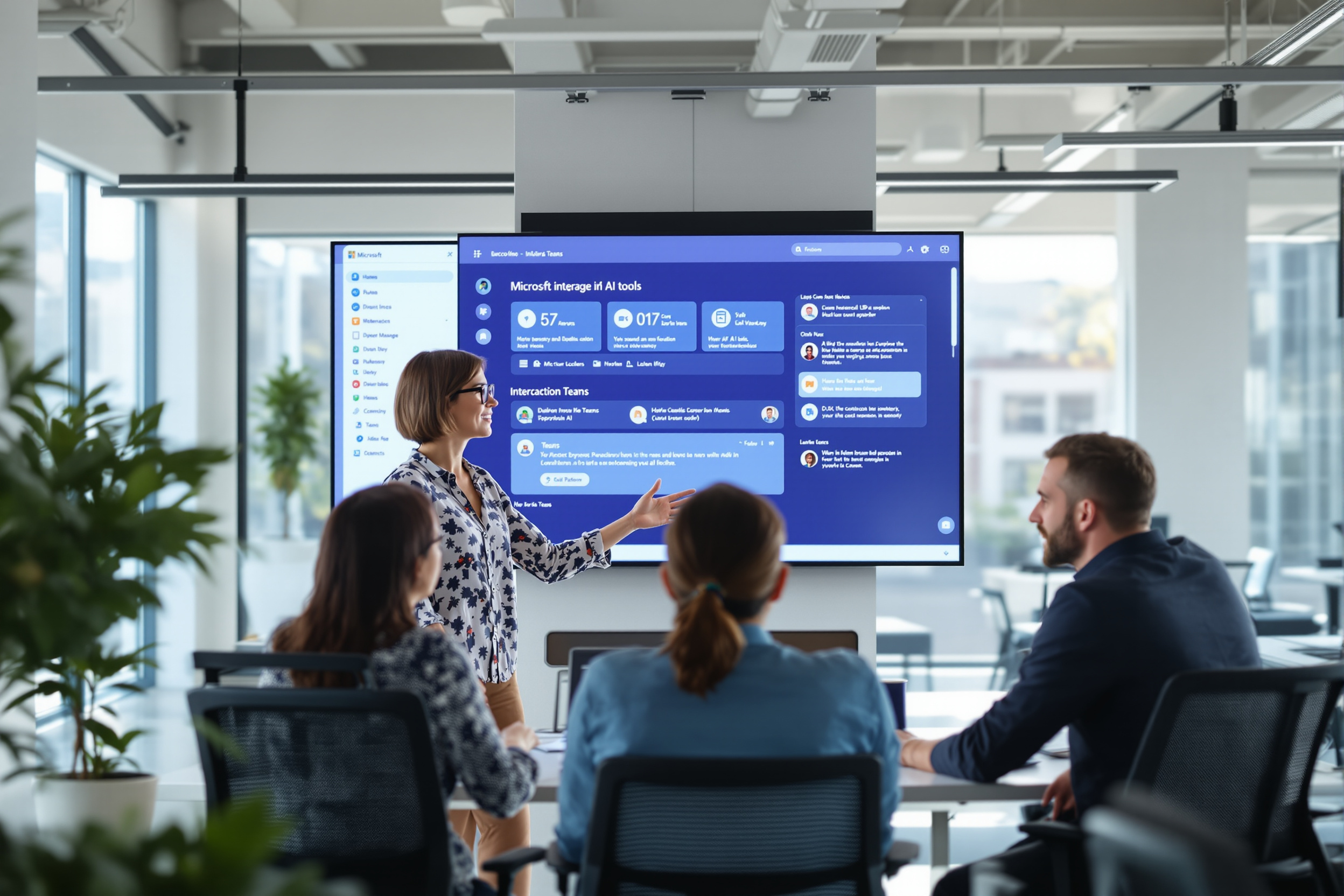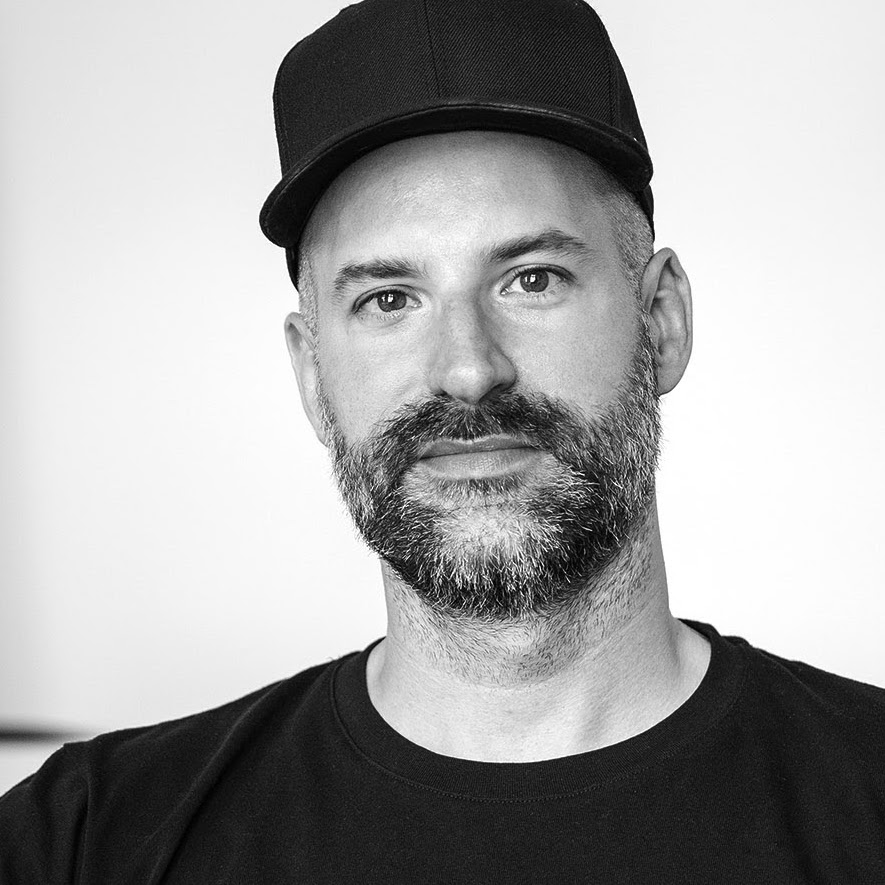Key Takeaways
You can create AI in Microsoft Teams using no-code tools like Copilot Studio for simple bots or custom code with Azure OpenAI for advanced agents.
In 2025, 91 percent of German companies view AI as critical, shifting the focus from if they should adopt it to how they can integrate it effectively.
Successful AI integration requires designing a hybrid team with clear roles and responsibilities for both humans and AI, which can boost decision-making speed by 25 percent.
The modern workplace is a battlefield of pings, endless meetings, and information overload. For the 91 percent of German companies that now see AI as critical to their future, the question is no longer *if* but *how* to integrate it. This guide is for Team Architects ready to move beyond the hype and build a real advantage. We will show you how to create AI in Microsoft Teams, not as a replacement for your people, but as a powerful partner that clears away the noise, automates the mundane, and gives your team the space to do its best work. It's time to make your team a hybrid hit.
Conquering the Chaos of Digital Collaboration
Your team is on a quest for greatness, but they are bogged down by digital friction. In fact, the average employee switches between 10 apps up to 25 times per day, losing focus and flow. This constant context switching creates a significant drag on productivity, turning simple tasks into lengthy chores. It is a modern form of change fatigue that leaves even the strongest teams feeling overwhelmed.
This is the dragon your team must slay every single day. Many leaders underestimate the 20 percent productivity loss from inefficient digital workflows. For Team Architects, the mission is clear: find a magic tool that restores order and clarity. That journey begins by rethinking how your team collaborates, setting the stage for a powerful new ally.
Introducing AI Agents: Your Team's New Magical Tool
Imagine an assistant that summarizes a one-hour meeting in 60 seconds or answers HR questions instantly. That is the power you can build directly inside Microsoft Teams. With tools like Copilot Studio, you can create a no-code bot that reduces routine support tickets by up to 15 percent. For more advanced needs, developers can use the Teams AI library to build custom assistants with Azure OpenAI.
Currently, 40.9 percent of German companies are actively using AI to improve their processes. You can start by creating a simple FAQ bot in just a few hours, providing immediate relief. This first step in adding an AI agent begins the journey toward a smarter, more streamlined workflow, preparing your team for deeper integration.
Architect Insight: Designing Your Human-AI Hybrid Team
As a Team Architect, your goal is to design a system where humans and AI collaborate seamlessly. With 56 percent of large German companies already using AI, a structured approach is essential. This is not about just launching a bot; it requires designing clear roles and responsibilities. Our Playful Tip: Think of your AI as a new team member with a specific job description.
Here is a checklist to get you started:
- Role Definition: What is the AI's primary function? (e.g., 'Meeting Summarizer,' 'Onboarding Guide').
- Human Handoff: At what point does a task escalate from the AI to a human expert?
- Data Governance: What information can the AI access to ensure it is helpful but secure?
- Success Metrics: How will you measure its impact? (e.g., time saved, tickets resolved).
- Feedback Loop: How will the team report issues or suggest improvements for the AI?
Defining these roles from day one prevents confusion and builds trust. You can try teamdecoder for free to map out these new hybrid structures. This clarity is the foundation for scaling your AI's role in the team effectively.
Teams Just Wanna Have Fun (and Be More Productive)
When AI handles the repetitive work, your team has more freedom to innovate. The German company Beiersdorf, for example, uses Azure AI to accelerate its research. Instead of spending up to 30 percent of their time searching for data, their AI agent delivers summaries in under five minutes. This frees up hundreds of hours for developing new products.
This is the result of a well-designed hybrid team. Teams that effectively collaborate with AI can improve their decision-making speed by 25 percent. This is not just about efficiency; it is about creating a more engaging work environment where people focus on high-value tasks. By designing better workflows, you make space for the creative work that humans do best.
Make Bots and Humans Click: A Four-Step Launch Plan
Ready to bring your first AI agent to life? A structured launch ensures your team and your new bot work together from the start. Deep Dive: A successful rollout focuses as much on people as it does on technology. Over 80 percent of German companies are increasing their AI budgets, making skilled implementation a key advantage.
Follow these four steps for a smooth integration:
- Start with a Pilot Group: Select a small, tech-savvy team to test the AI agent and provide early feedback.
- Standardize Your Toolkit: Use templates for common AI roles, like a 'Project Tracker' or 'Knowledge Base Assistant'.
- Train Your People: Focus on teaching employees how to write effective prompts, which can improve output quality by 40 percent.
- Monitor and Refine: Use interaction data to understand user questions and continuously improve the AI's knowledge base.
Our Playful Tip: Celebrate small wins, like the first time the AI perfectly summarizes a complex project update. This builds momentum and encourages adoption across the organization. Proper training for AI collaboration is the key to unlocking its full potential.
From a Single Bot to a Strategic Transformation
Your first AI agent is just the beginning. The real transformation happens when you scale this capability into a core part of your organizational development. With 69 percent of German companies having established a formal AI strategy, the time for experimentation is evolving into a time for strategic implementation. This means moving from isolated bots to an integrated ecosystem of hybrid teams.
The goal is to create a system where AI handles processes, freeing humans to drive strategy. This shift requires a new kind of governance and a clear vision for the future of work. By embedding AI into your core operations, you build a more resilient and adaptive organization, ready for whatever comes next. This is how you build a truly hybrid human-AI team.
Try teamdecoder for free - shape your team and make change feel like play! See our pricing
More Links
Wikipedia offers a comprehensive overview of Artificial Intelligence.
Microsoft provides information about the Microsoft Teams AI platform.
Microsoft Learn offers an overview of conversational AI within Microsoft Teams.
Microsoft Support provides guidance on using Copilot in Microsoft Teams meetings.
Bertelsmann Foundation presents an article discussing the stagnation of AI jobs in the German labor market.
PwC shares a press release on AI's potential to drive productivity growth and higher salaries.
Fraunhofer IAO provides a scenario report on digital transformation.
Denkfabrik BMAS offers a report on generative AI technology scenarios and their impact on work until 2030.
Deloitte provides its perspective on generative AI and the future of work.
FAQ
How do I ensure the AI I create in Teams is secure?
When building with Microsoft tools like Azure OpenAI, you benefit from enterprise-grade security. It is critical to manage data access permissions carefully, just as you would for a human team member, ensuring the AI only accesses the information it needs to perform its role.
What kind of training does my team need to work with AI?
Focus training on practical skills like writing clear and effective prompts, understanding the AI's capabilities and limitations, and knowing when to escalate a task to a human. Effective prompting alone can improve the quality of AI output by 40 percent.
Can an AI agent join meetings like a person?
Yes, AI assistants like Microsoft Copilot can join meetings to provide live transcriptions, take notes, and summarize action items. This helps ensure that everyone, including those who could not attend, gets the key takeaways.
How do we measure the ROI of creating AI in Microsoft Teams?
Measure ROI with metrics like time saved on automated tasks, reduction in support tickets, faster decision-making, and improved project completion rates. Survey your team to gauge satisfaction and perceived productivity improvements.
What is a 'human-in-the-loop' system?
It's a hybrid model where an AI performs a task, but a human can step in to review, approve, or correct its work. This is crucial for complex or sensitive tasks, ensuring quality and control while still benefiting from AI's speed and scale.
Where can I get help designing our hybrid team structure?
Tools like teamdecoder are specifically designed for this purpose. You can map out roles, responsibilities, and workflows for your human and AI team members. For hands-on support, you can book a free personal consultation to get started. Schedule consultation





